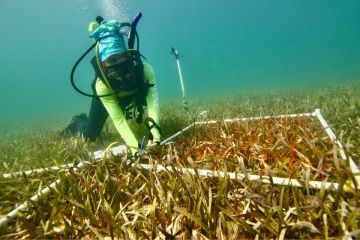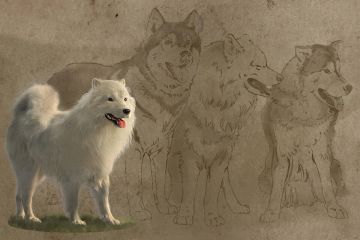Paleolithic stones snag 21st-century attention
- Tara Sharpe
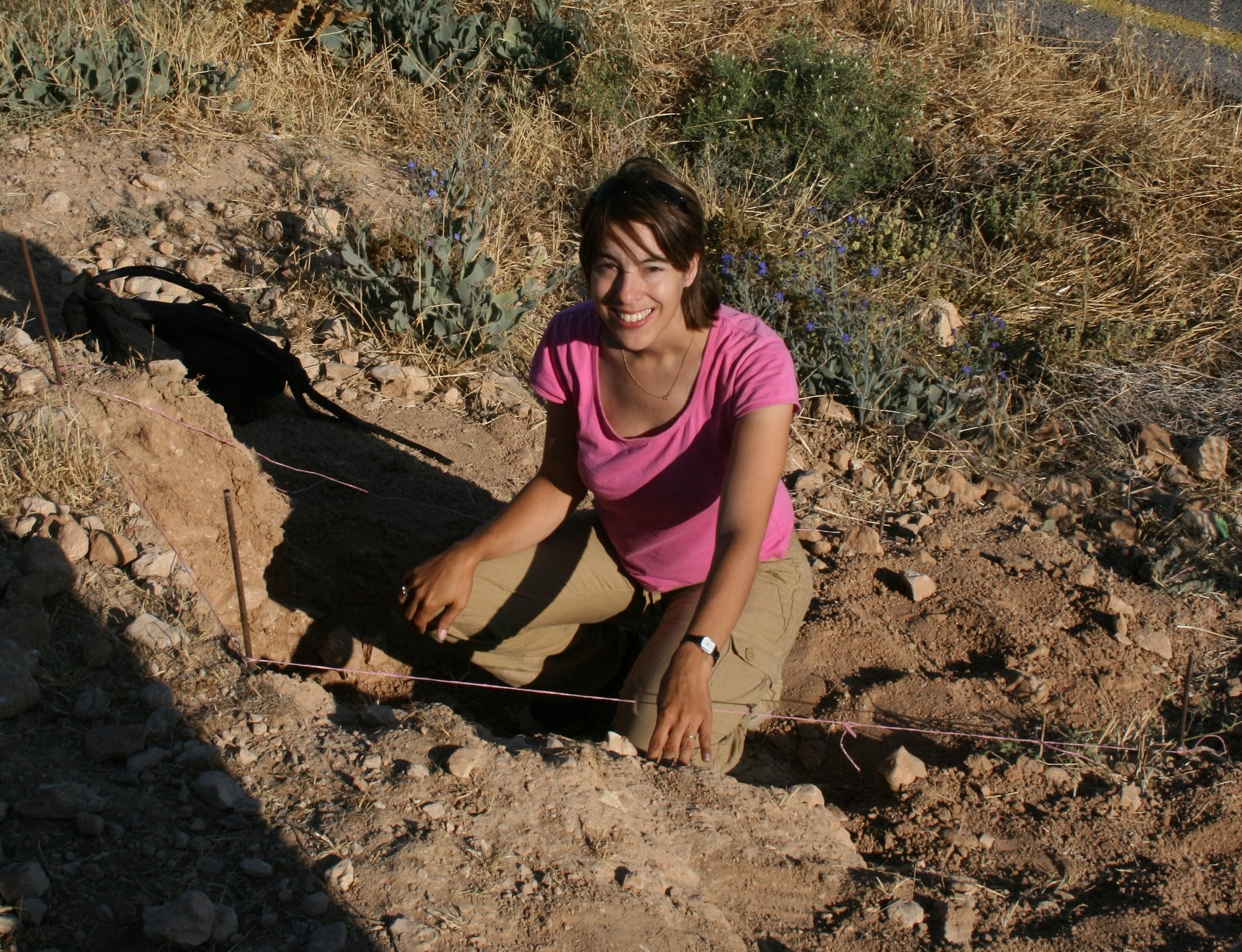
We’ve got proof: early humans found clever ways to subsist
A quarter of a million years ago, an early human used a flint stone tool to butcher a waterfowl, alert to the possibility of predators at the edge of the watering hole, then discarded the blunted device before leaving the dangerous area.
Daylight duck-hunting is one possible scenario described in a new study on the groundbreaking discovery by UVic paleoanthropologist April Nowell (anthropology) and seven co-authors of how early humans found clever ways to subsist in a challenging land.
During an extensive three-year excavation 100 km east of Amman, Jordan, the archaeology team led by Nowell uncovered 10,000 well-preserved Middle Pleistocene stone tools from the Azraq Basin, once a lush wetland oasis in the heart of the ancient Levantine corridor (now Syria, Lebanon, Israel and Jordan) connecting Africa and the Eurasian continent. Two UVic graduate students were also involved in the dig (see "Hands first into firsthand learning" below).
After closely examining 7,000 scrapers, flakes, projectile points, hand axes and chipping debris, then meticulously testing for evidence of protein residue (blood, tissue and other animal products), the research team from UVic and partner universities in the US and Jordan found the oldest-ever evidence on 17 tools of identifiable residual remains of butchered animals including duck, horse, rhinoceros and wild cattle.
A world-first discovery on early use of Stone Age tools
The findings draw startling conclusions about surprisingly sophisticated strategies—suggesting cognitive ability, social order and technical acuity—applied by early humans (probably Homo erectus or Homo hiedelbergensis) to survive in an increasingly demanding habitat thousands of years before our direct ancestors evolved in Africa.
The new paper published in the Journal of Archaeological Science has already garnered significant attention including from the Washington Post, TIME, New York Times, The Globe and Mail, United Press International, CNN, CTV National News, CBC News and the Canadian Press.
Approximately 250,000 years ago, the Azraq Basin became increasingly arid and it is now drying up again (ironically, providing fertile ground for excavation) due to climate change and water demand for crops and consumption. The article in TIME points out the team “went looking for ancient artifacts in a place you wouldn’t think of as a garden spot for proto-humans” but “Nowell and her colleagues hit paydirt” in two of nine layers of geological strata of silt and sediment revealed by the receding groundwater.
As Nowell explained on CBC’s national radio program As It Happens, humans as a species have “‘had to adapt and learn to eat anything and everything…This is something that happens late in our evolution. Our residue results give us the beginning of that story.’”
“CSI” for the Paleolithic period
It was UVic sessional instructor and co-author Daniel Stueber who first suggested testing for protein residue. However, cross-over immunoelectrophoresis (CIEP)—a biochemical method used traditionally in forensics—is an expensive undertaking.
Nowell at first sent six tools to co-author and supervising archaeologist Cameron Walker (now with Oregon Health and Science University) at the Residue Analysis Lab in Portland, Oregon.
Stueber told the Globe and Mail: “‘We were just courageous enough to take the chance…and we got really strong results.’” After one came back positive, another 38 tools were tested.
With eventual proof of protein residue on 17 tools, “for the first time, we had direct evidence of exploitation by our Stone Age ancestors of specific animals for subsistence,” adds Nowell.
Hominins, a term only recently in common use by paleoanthropologists, include our ancestors (Homo sapiens, Neanderthals, Denisovans), as well as extinct proto-humans including those who once clustered near the Azraq water hole to ambush their prey.
Another result of the study is the potential to revolutionize what researchers know about early hominin diets. And, according to the new paper, "Our data join a growing body of work that demonstrates the survival of biological tissues in identifiable form on Lower and Middle Paleolithic tools…previously held suppositions about the preservation of biological evidence may need to be reconsidered."
The Washington Post caught Nowell reflecting on another puzzling piece: each tool appeared to have been used once only. Were the tools just discarded, leaving a trail like Stone Age disposable cutlery for 21st-century humans to retrieve? Was it easier to make new tools than resharpen blunt edges? “‘It’s such a direct window onto past behavior.’”
Nowell has been working in Jordan for more than 15 years and with this team at this site since 2013.
Hands first into firsthand learning
Two UVic anthropology students—Jeremy Beller (PhD candidate) and John Murray (MA candidate)—participated in the excavation in Jordan, recording and processing the artifacts. Beller’s work focuses on where the flint material (used to make the stone tools) originated. Murray says, “I’m trying to figure out how the tools were being used, not just what they were being used on. So I’m recreating functional activities like butchering and plant-processing to see how they might have been using the tools. I feel like this is one of the most fulfilling things I could have done with my master’s. Hands-on learning is essential in anthropology. And I picked UVic Anthropology because of Dr. Nowell and her project. That was what drew me here first.”
A collaborative effort
The new paper is co-authored by Nowell; Stueber; Christopher Ames, formerly at UVic and the University of California, Berkeley; Walker; Carlos Cordova of Oklahoma State University; James Pokines of Boston University School of Medicine and with the Office of the Chief Medical Examiner in Boston; Regina DeWitt of East Carolina University; and Amer Al-Souliman of Hashemite University, Jordan.
The research was fully funded by a grant from the Social Sciences and Humanities Research Council of Canada. In Jordan, the Department of Antiquities and the Azraq Wetland Reserve (under the auspices of Jordan’s Royal Society for the Conservation of Nature) provided assistance and permissions to conduct work on the site.
The Journal of Archaeological Science is published by Elsevier, a publisher based in Amsterdam with leading global products such as ScienceDirect.com and more than 2,000 journals including The Lancet. The study, "Middle Pleistocene Subsistence in the Azraq Oasis, Jordan: Protein residues and other proxies," appeared online in August and in the September edition of the journal. UVic issued a news release and backgrounder on Aug. 8.
What’s next
Nowell “feels very much a part of the communities [of Azraq]” and looks forward to rejoining her close-knit archaeology team for more work in the region in the next few years.
Meanwhile there are still a few remaining protein residue extractions to test. Nowell is hoping for signs of Asian elephant and ostrich on the Middle Pleistocene menu.
Photos
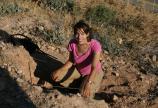
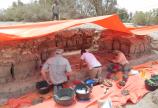
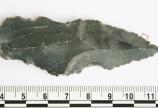
In this story
Keywords: anthropology, archaeology, diet, Indigenous, evolution, research, history
People: April Nowell


